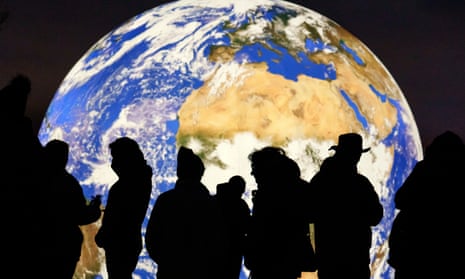The long-feared “population bomb” may not go off, according to the authors of a new report that estimates that human numbers will peak lower and sooner than previously forecast.
The study, commissioned by the Club of Rome, projects that on current trends the world population will reach a high of 8.8 billion before the middle of the century, then decline rapidly. The peak could come earlier still if governments take progressive steps to raise average incomes and education levels.
The new forecasts are good news for the global environment. Once the demographic bulge is overcome, pressure on nature and the climate should start to ease, along with associated social and political tensions.
But the authors caution that falling birthrates alone will not solve the planet’s environmental problems, which are already serious at the 8 billion level and are primarily caused by the excess consumption of a wealthy minority.
Declining populations can also create new problems, such as a shrinking workforce and greater stress on healthcare associated with an ageing society, as countries like Japan and South Korea are finding.
One of the authors of the report, Ben Callegari, said the findings were cause for optimism – but there was a catch. “This gives us evidence to believe the population bomb won’t go off, but we still face significant challenges from an environmental perspective. We need a lot of effort to address the current development paradigm of overconsumption and overproduction, which are bigger problems than population.”
Previous studies have painted a grimmer picture. Last year, the UN estimated the world population would hit 9.7 billion by the middle of the century and continue to rise for several decades afterwards.
The new projection, released on Monday, was carried out by the Earth4All collective of leading environmental science and economic institutions, including the Potsdam Institute for Climate Impact Research, Stockholm Resilience Centre and the BI Norwegian Business School. They were commissioned by the Club of Rome for a followup to its seminal Limits to Growth study more than 50 years ago.
The report is based on a new methodology which incorporates social and economic factors that have a proven impact on birthrate, such as raising education levels, particularly for women, and improving income. It sketches out two scenarios depending on the extent to which such policies are pursued.
In the business-as-usual case, it foresees existing policies being enough to limit global population growth to below 9 billion in 2046 and then decline to 7.3 billion in 2100. This, they warn, is too little too late: “Although the scenario does not result in an overt ecological or total climate collapse, the likelihood of regional societal collapses nevertheless rises throughout the decades to 2050, as a result of deepening social divisions both internal to and between societies. The risk is particularly acute in the most vulnerable, badly governed and ecologically vulnerable economies.”
after newsletter promotion
In the second, more optimistic scenario – with governments across the world raising taxes on the wealthy to invest in education, social services and improved equality – it estimates human numbers could hit a high of 8.5 billion as early as 2040 and then fall by about a third to about 6 billion in 2100. Under this pathway, they foresee considerable gains by mid-century for human society and the natural environment.
“By 2050, greenhouse gas emissions are about 90% lower than they were in 2020 and are still falling,” according to the report. “Remaining atmospheric emissions of greenhouse gases from industrial processes are increasingly removed through carbon capture and storage. As the century progresses, more carbon is captured than stored, keeping the global temperature below 2C above pre-industrial levels. Wildlife is gradually recovering and starting to thrive once again in many places.”










